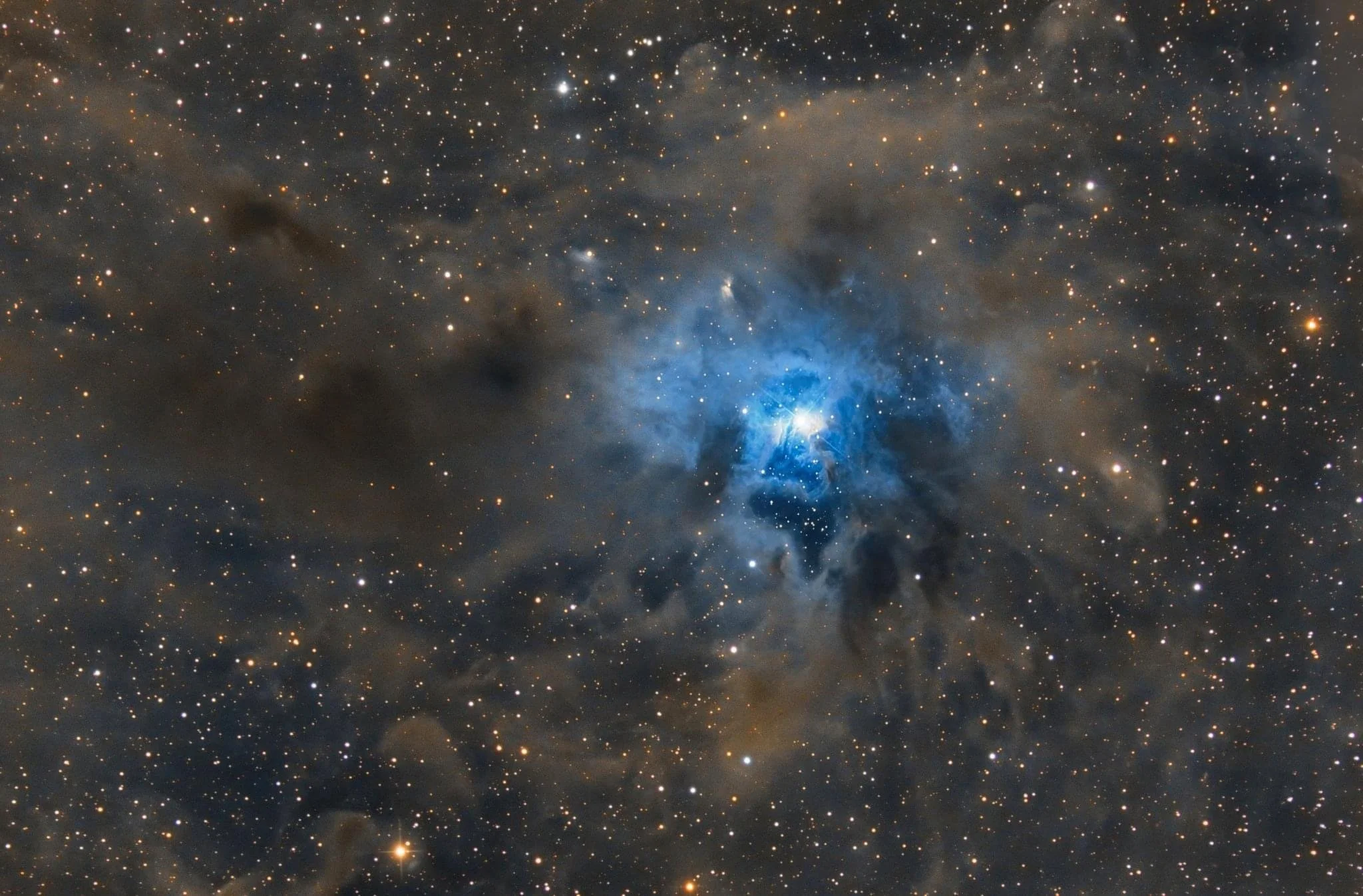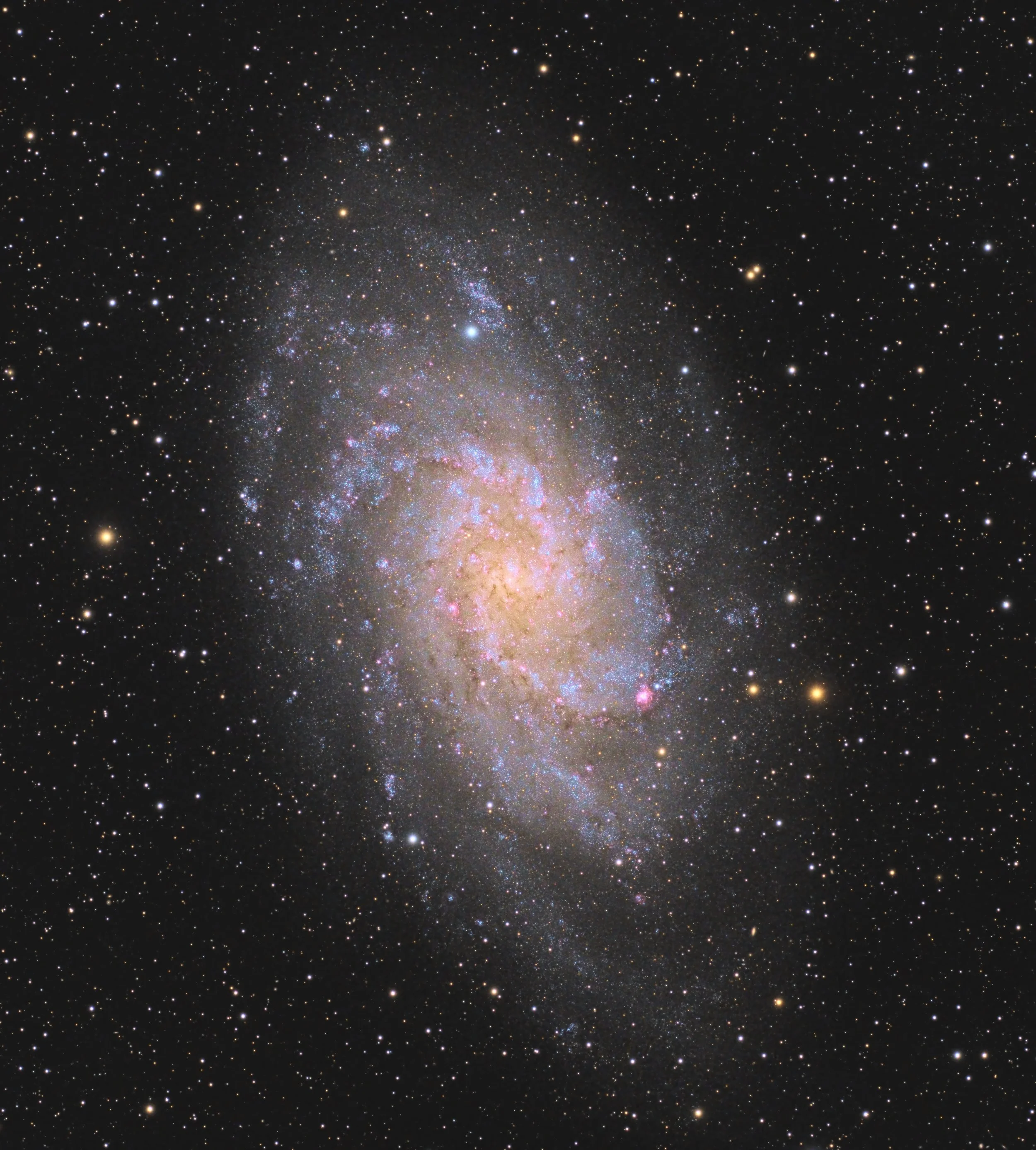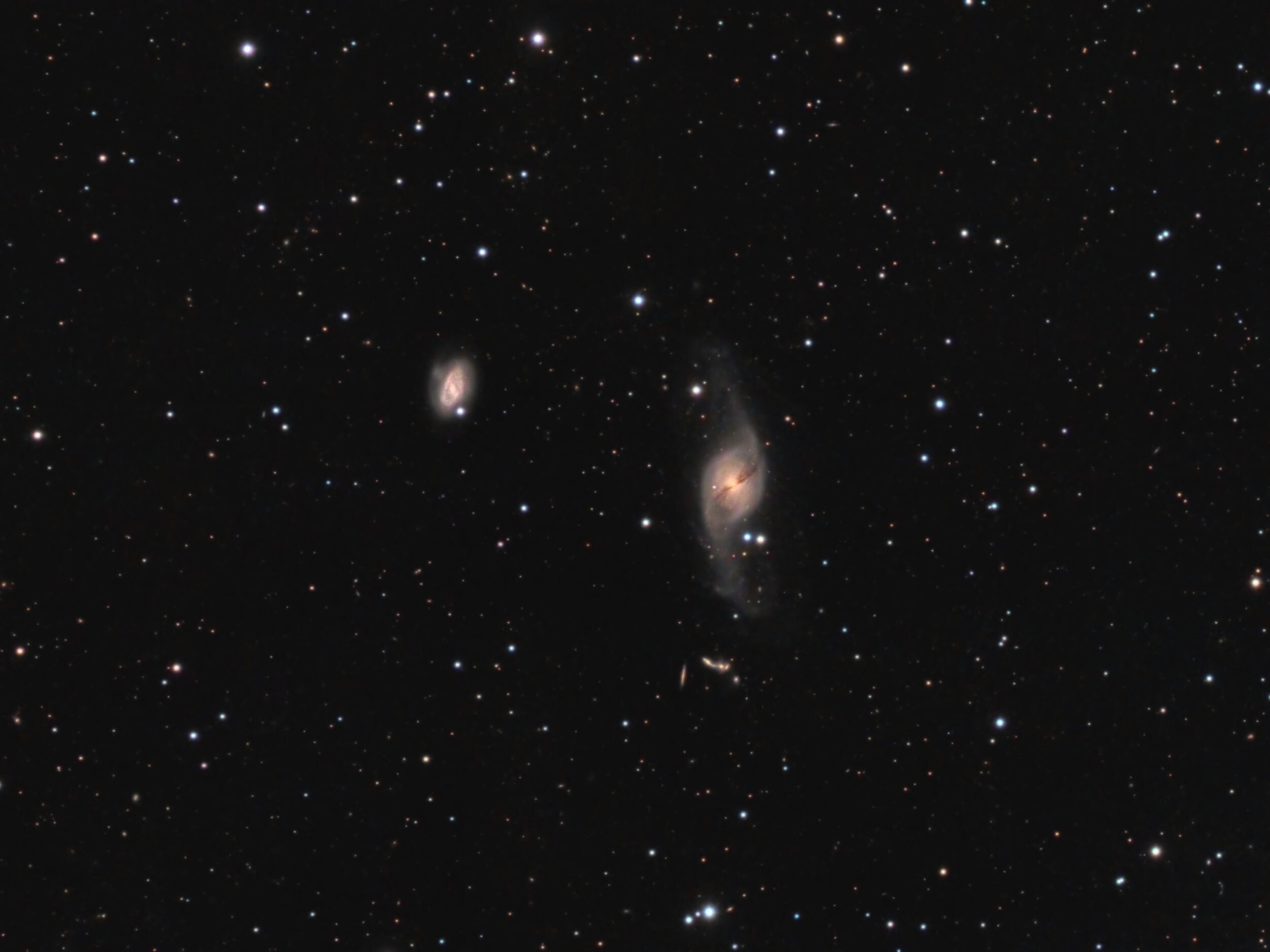
AAPOD2 Image Archives
Iris nebula
Four astrophotographers, 6 telescopes, 5 cameras and 129 hours of data. This is a collaboration image. We pooled our data and processed in PixInsight... the Iris Nebula in Cepheus.
Telescopes:
• Starfield Optics 8" Astrograph
• Skywatcher Esprit 100mm Refractor
• Explore Scientific 127mm CF Refractor
• OGS/RCOS R-C 10"
• Meade RCX 10"
• Skywatcher Esprit 150mm Refractor
Cameras:
• QHY268M
• QHY268C
• Atik 11000
• QSI683
• QHY16200A
Filters:
• Optolong L-R-G-B
• Astrodon E series L-R-G-B
• Astrodon True Balance L-R-G-B
Total integration time:
• 129 hours
Data acquired from:
• Kitchener, Ontario, Canada
• Guelph, Ontario, Canada
• New Mexico, USA
• Sanborn, NY, USA
Processed in PixInsight
Copyright: Shawn Nielsen / Warren A. Keller / Ron Brecher / Peter Proulx
m33
Image Description and Details : M33, familiarly known as the Triangulum Galaxy, is one of the closest large galaxies to Earth. It’s located in the constellation Triangulum at a distance of about 2.5 million light years and has a diameter of around 60,000 light years.
Luminance: Sky-Watcher Esprit 150 f/7 refractor and QHY600M camera with Optolong UV/IR filter
Chrominance: Takahashi FSQ-106 ED IV @ f/5 and QHY367C Pro one-shot colour camera with Optolong UV/IR filter
Processed in PixInsight
27x10m Lum = 4hr30m
51 x 5m OSC = 4hr25m
Total: 8hr45m
Image scale 0.72 arcsec per pixel (based on Luminance)
Copyright: Ron Brecher
Sh2-155 “The Cave Nebula”
The Cave Nebula lies in the constellation Cepheus about 2,400 light years away, pretty close in cosmic terms. The “cave” has a bright rim ionized by the hot blue-white stars in the vicinity. The main “cave” structure is 10 light years across and is catalogued as Sharpless 155 (Sh2-155) and also as Caldwell 9 (the Caldwell catalogue was compiled by Sir Patrick Moore, and named for his mother’s maiden name). Near the lower left corner of the image is a blue reflection nebula, vdB 155. The Cave Nebula region makes a nice natural colour image, highlighting red emission nebula, blue reflection nebulae, dark nebulae and many colourful stars. I’ve also imaged the Cave Nebula before at higher resolution; that image was publishedin the April 2016 issue of Sky and Telescope.
Tekkies:
Acquisition, focusing, and control of Paramount MXmount, with TheSkyX. Focus with Optec DirectSync motor and controller. Unguided. Automation with CCDCommander. Equipment control with PrimaLuce Labs Eagle 3 Pro computer. All pre-processing and processing in PixInsight. Acquired from my SkyShed in Guelph. Average transparency and seeing. Data acquired March 2-14, 2021 in a mostly moonless sky.
Sky-Watcher Esprit 150 f/7 refractor and QHY 16200-Acamera with Optolong H-alpha, O(III) and S(II) filters
Ha: 49 x 10m = 8hr10m
O3: 47 x 10m = 7hr50m
S2: 45 x 10m = 7hr30m
Total: 23hr30m
Copyright: Ron Brecher
NGC 3718, NGC 3723, and Hickson 56
Christmas in June? No, just galaxy NGC 3718 making me think of that time of year. It's surrounded by other galactic treasures including Hickson Compact Group 56 and NGC 3729.
Acquisition, focusing, guiding and control of Paramount MX mount with TheSkyX. Focus with Optec DirectSync motor and controller. Automation with CCDCommander. Equipment control with PrimaLuce Labs Eagle 3 Pro computer. All pre-processing and processing in PixInsight. Acquired from my SkyShed in Guelph. No moon, average or better transparency, and average seeing. Data acquired April 2 – May 16, 2020.
Luminance: Sky-Watcher Esprit 150 f/7 refractor and QHY 16200-A camera with Optolong UV/IR filter
Chrominance: Takahashi FSQ-106 ED IV @ f/3.6 and QHY367C one-shot colour camera with Optolong L-Pro filter
Luminance: 139 x 10m = 1,390m
Chrominance: 289x 3m = 867m
Total: 37hr 37m
Copyright: Ron Brecher
Thor’s Helmet
Thor’s Helmet (NGC 2539, Sh2-298, Gum 4) is an emission nebula in Canis Major. The powerful Wolf-Rayet star WR7 near the centre of the nebula is causing the gases to glow. That star is thought to be in a brief pre-supernova stage, and could explode in the cosmically-not-too-distant future. This object is thought to be similar to the Bubble Nebula, but the energy from WR7 has blown the gas in Thor’s Helmet into more complex shapes. Thor’s Helmet also contains much more oxygen structures than the Bubble Nebula. Oxygen gives the teal-coloured structure; hydrogen provides the reds. This nebula contains hundreds of solar masses of ionized gases (the gases that are glowing), along with hundreds of thousands of solar masses of unionized material. The age of the nebula is uncertain, with estimates ranging from 78,500 to 236,000.
This data used to create this image was acquired from Yass, New South Wales, Australia by my friend, expert astrophotographer Martin Pugh. Thank you Martin!
Tekkies:
SBIG STXL-11002 camera, Astrodon Ha, O3, R, G and B filters, Planewave 17″ CDK, Paramount ME. Equipment control with the SkyX, scripted with CCDAutopilot. All pre-processing and processing in PixInsight, except that master calibration frames were made using CCDStack. Data Acquired by Martin Pugh, from Yass, NSW, Australia.
3x10m R and B, 4x10m B, 18x20m Ha and 13x30m O3 unbinned frames (total=14hr10m).
Image scale is 0.63 arcsec per pixel for this camera / telescope combination.
Copyright: Ron Brecher





